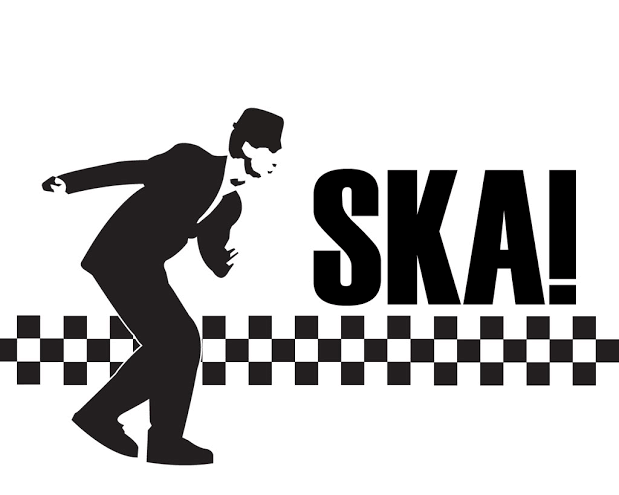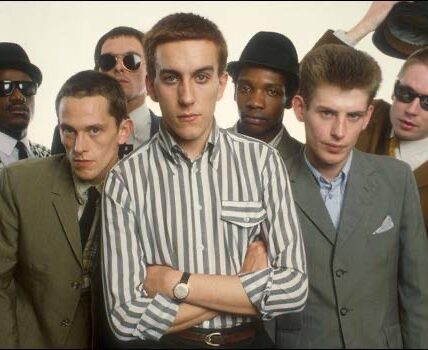In an unexpected twist of the musical landscape, ska music is experiencing a remarkable resurgence in the mainstream charts. Once a staple of the late 1970s and 1980s, characterized by its upbeat rhythms, brass instrumentation, and infectious energy, ska has seen a revival that is capturing the attention of new generations of listeners. This article delves into the roots of ska, its historical significance, the factors contributing to its recent resurgence, and the impact it is having on today’s music scene.
#### The Roots of Ska
Ska originated in Jamaica in the late 1950s, blending elements of Caribbean mento and calypso with American jazz and rhythm and blues. The genre is distinguished by its walking bass lines, offbeat guitar or piano rhythms, and the signature brass section, often featuring trumpets and saxophones. Bands like The Skatalites were pivotal in shaping the sound, providing the groundwork for what would evolve into reggae and rocksteady.
By the 1960s, ska began to gain popularity outside Jamaica, particularly in the UK, where it became intertwined with the mod subculture. British bands like Madness and The Specials helped popularize ska in the punk scene, infusing it with a rebellious edge that resonated with youth culture. The genre’s unique blend of joyfulness and social commentary made it a powerful medium for addressing pressing societal issues.
#### The Ska Explosion of the 1990s
The 1990s saw a significant revival of ska in the United States, often referred to as the “third wave” of ska. Bands like No Doubt, Reel Big Fish, and Sublime brought the genre into the mainstream, fusing ska with punk rock and pop influences. This era was marked by high-energy performances, catchy hooks, and a distinct style that combined retro aesthetics with modern sensibilities.
However, as the 2000s progressed, the popularity of ska began to wane. Other genres, particularly pop-punk and hip-hop, dominated the charts, and ska became relegated to niche markets. While dedicated fans continued to support ska bands, the genre’s presence in mainstream music dwindled.
#### Factors Contributing to the Resurgence
In recent years, several factors have contributed to ska’s surprising return to the charts:
1. **Nostalgia and Retro Trends**: The cyclical nature of music trends often sees genres rise and fall based on nostalgia. The resurgence of interest in the sounds of previous decades, particularly the 90s and early 2000s, has led to a renewed appreciation for ska. Younger audiences are increasingly exploring music from past eras, and ska’s upbeat, feel-good vibe resonates in a time marked by uncertainty and anxiety.
2. **Social Media and Streaming Platforms**: Platforms like TikTok and Spotify have played a significant role in revitalizing interest in ska. Viral trends, including dance challenges featuring ska tracks, have introduced the genre to a broader audience. Playlists dedicated to ska and ska-punk have also emerged, allowing listeners to discover both classic and contemporary ska artists.
3. **Emerging Artists and Collaborations**: New bands are infusing ska with modern sounds, often collaborating with artists from other genres. This blending of styles is attracting a diverse audience. For example, bands like The Interrupters and Skatune Network have successfully merged ska with punk, pop, and even hip-hop, creating fresh sounds that appeal to a wider demographic.
4. **Cultural and Political Climate**: The socio-political climate has prompted a resurgence in music that addresses societal issues. Ska, known for its roots in activism and social commentary, resonates with current movements advocating for justice, equality, and change. This alignment has made ska relevant once again, as new artists draw on the genre’s legacy to speak out on contemporary issues.
#### Recent Chart Success
The recent success of ska-infused tracks on mainstream charts has been nothing short of surprising. The Interrupters, with their energetic sound and socially conscious lyrics, have found significant success on streaming platforms. Their 2020 album, “Fight the Good Fight,” debuted to critical acclaim and featured collaborations with legendary ska musicians. Songs like “She’s Kerosene” have garnered millions of streams and have made their way into popular playlists.
Additionally, established bands like Reel Big Fish have begun to see a resurgence in their concert attendance and merchandise sales. Nostalgic tours and appearances at music festivals have allowed them to reconnect with long-time fans while attracting new listeners. The combination of live performances and streaming success has helped revitalize interest in their back catalog.
#### The Future of Ska
As ska continues to gain traction in the mainstream, the future looks promising. The genre’s adaptability allows it to blend with various musical styles, ensuring that it can evolve while maintaining its core identity. Bands are experimenting with elements of reggae, punk, and even electronic music, which keeps the sound fresh and appealing to modern audiences.
Moreover, ska’s inclusive nature fosters community and collaboration, making it a breeding ground for creativity. New artists are emerging from diverse backgrounds, bringing their influences and experiences into the genre. This diversity not only enriches the music but also reflects the multicultural roots of ska itself.
#### Conclusion
The resurgence of ska music in mainstream charts is a testament to its enduring appeal and cultural significance. From its origins in Jamaica to its current revival, ska has consistently provided a soundtrack for both celebration and resistance. As new artists embrace the genre and innovative collaborations continue to emerge, ska is poised to reclaim its place in the musical landscape. The blend of nostalgia, social relevance, and infectious energy ensures that ska will not only survive but thrive in the years to come. Whether through lively performances, streaming hits, or viral moments, ska music is ready to dance its way back into the hearts of listeners around the world.
### Ska Music Sees Surprise Resurgence in Mainstream Charts
In an unexpected twist of the musical landscape, ska music is experiencing a remarkable resurgence in the mainstream charts. Once a staple of the late 1970s and 1980s, characterized by its upbeat rhythms, brass instrumentation, and infectious energy, ska has seen a revival that is capturing the attention of new generations of listeners. This article delves into the roots of ska, its historical significance, the factors contributing to its recent resurgence, and the impact it is having on today’s music scene.
#### The Roots of Ska
Ska originated in Jamaica in the late 1950s, blending elements of Caribbean mento and calypso with American jazz and rhythm and blues. The genre is distinguished by its walking bass lines, offbeat guitar or piano rhythms, and the signature brass section, often featuring trumpets and saxophones. Bands like The Skatalites were pivotal in shaping the sound, providing the groundwork for what would evolve into reggae and rocksteady.
By the 1960s, ska began to gain popularity outside Jamaica, particularly in the UK, where it became intertwined with the mod subculture. British bands like Madness and The Specials helped popularize ska in the punk scene, infusing it with a rebellious edge that resonated with youth culture. The genre’s unique blend of joyfulness and social commentary made it a powerful medium for addressing pressing societal issues.
#### The Ska Explosion of the 1990s
The 1990s saw a significant revival of ska in the United States, often referred to as the “third wave” of ska. Bands like No Doubt, Reel Big Fish, and Sublime brought the genre into the mainstream, fusing ska with punk rock and pop influences. This era was marked by high-energy performances, catchy hooks, and a distinct style that combined retro aesthetics with modern sensibilities.
However, as the 2000s progressed, the popularity of ska began to wane. Other genres, particularly pop-punk and hip-hop, dominated the charts, and ska became relegated to niche markets. While dedicated fans continued to support ska bands, the genre’s presence in mainstream music dwindled.
#### Factors Contributing to the Resurgence
In recent years, several factors have contributed to ska’s surprising return to the charts:
1. **Nostalgia and Retro Trends**: The cyclical nature of music trends often sees genres rise and fall based on nostalgia. The resurgence of interest in the sounds of previous decades, particularly the 90s and early 2000s, has led to a renewed appreciation for ska. Younger audiences are increasingly exploring music from past eras, and ska’s upbeat, feel-good vibe resonates in a time marked by uncertainty and anxiety.
2. **Social Media and Streaming Platforms**: Platforms like TikTok and Spotify have played a significant role in revitalizing interest in ska. Viral trends, including dance challenges featuring ska tracks, have introduced the genre to a broader audience. Playlists dedicated to ska and ska-punk have also emerged, allowing listeners to discover both classic and contemporary ska artists.
3. **Emerging Artists and Collaborations**: New bands are infusing ska with modern sounds, often collaborating with artists from other genres. This blending of styles is attracting a diverse audience. For example, bands like The Interrupters and Skatune Network have successfully merged ska with punk, pop, and even hip-hop, creating fresh sounds that appeal to a wider demographic.
4. **Cultural and Political Climate**: The socio-political climate has prompted a resurgence in music that addresses societal issues. Ska, known for its roots in activism and social commentary, resonates with current movements advocating for justice, equality, and change. This alignment has made ska relevant once again, as new artists draw on the genre’s legacy to speak out on contemporary issues.
#### Recent Chart Success
The recent success of ska-infused tracks on mainstream charts has been nothing short of surprising. The Interrupters, with their energetic sound and socially conscious lyrics, have found significant success on streaming platforms. Their 2020 album, “Fight the Good Fight,” debuted to critical acclaim and featured collaborations with legendary ska musicians. Songs like “She’s Kerosene” have garnered millions of streams and have made their way into popular playlists.
Additionally, established bands like Reel Big Fish have begun to see a resurgence in their concert attendance and merchandise sales. Nostalgic tours and appearances at music festivals have allowed them to reconnect with long-time fans while attracting new listeners. The combination of live performances and streaming success has helped revitalize interest in their back catalog.
#### The Future of Ska
As ska continues to gain traction in the mainstream, the future looks promising. The genre’s adaptability allows it to blend with various musical styles, ensuring that it can evolve while maintaining its core identity. Bands are experimenting with elements of reggae, punk, and even electronic music, which keeps the sound fresh and appealing to modern audiences.
Moreover, ska’s inclusive nature fosters community and collaboration, making it a breeding ground for creativity. New artists are emerging from diverse backgrounds, bringing their influences and experiences into the genre. This diversity not only enriches the music but also reflects the multicultural roots of ska itself.
#### Conclusion
The resurgence of ska music in mainstream charts is a testament to its enduring appeal and cultural significance. From its origins in Jamaica to its current revival, ska has consistently provided a soundtrack for both celebration and resistance. As new artists embrace the genre and innovative collaborations continue to emerge, ska is poised to reclaim its place in the musical landscape. The blend of nostalgia, social relevance, and infectious energy ensures that ska will not only survive but thrive in the years to come. Whether through lively performances, streaming hits, or viral moments, ska music is ready to dance its way back into the hearts of listeners around the world.




